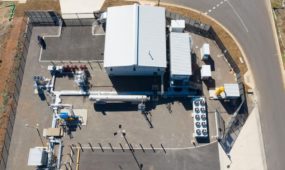Ausmex confident of copper and gold finds after Audio-Magnetotelluric survey
Resources & Energy
New exploration technology has been credited with helping identify potential near surface copper mineralisation in the renowned Burra copper region in South Australia.

Sign up to receive notifications about new stories in this category.
Thank you for subscribing to story notifications.

The breakthrough will not only help boost copper target assessment in the area but will widen the potential to discover larger regional iron oxide copper gold (IOCG) depositions in South Australia’s Mid North.
Ausmex Mining Managing Director Matthew Morgan told delegates at the second day of Paydirt 2019 South Australian Resources and Energy Investment Conference in Adelaide that the use of Audio-magnetotelluric (AMT) surveys had identified potential plumes extending to near surface and just below, known as surface copper mineralisation.
AMT is a higher-frequency magnetotelluric technique for shallower investigations, which samples signal frequencies in the range of 20k Hz down to ~ 1Hz to provide more detailed data pertaining to the very Upper Crust of the Earth’s surface. Although shallower than the traditional MT, the samples can be done in an hour to perform and use smaller and lighter magnetic sensors.
“The use of AMT is very innovative for a Junior miner,” Morgan said.
“The technology is low cost, non-invasive and has low environmental impact,” Mr Morgan said.
Ausmex has access to around 7,400sq km of exploration ground around Burra, about 160km north of Adelaide. Key parts of the exploration ground are in the same structural corridor as the existing Olympic Dam and Prominent Hill copper-gold mines.
In a statement to the Australian Stock Exchange on April 8, Ausmex Mining Group announced the completion of the initial field component of a 5km spaced grid-based AMT survey at Burra by Zonge Engineering and Research Organisation. The 5km AMT initial survey focuses on two of the seven targets defined by Ausmex’s earlier 10km regional MT grid with data from 39 stations collected.
The earlier survey was conducted in October 2018 with help from the University of Adelaide.
The AMT survey was designed to increase the data resolution from the initial investigation to progress the conductive zone to exploration and drill targets.
Initial results have Identified shallow to mid crustal conductive zones with distinct plumes that lead up to the surface under known mineralization near Burra. The potential mineral plumes are up to15km in width.
“The specific AMT surveys completed last month targeted mineralisation from surface to one kilometre depth in a geological structure which has some quite complex geo-electromagentic regimes,” Morgan said.
“The confirmation of the plumes rising to surface below known copper mineralisation is a successful outcome.”
“Certainly the initial results warrant further follow-up.”
Burra was one of the world’s largest copper producing centres for about three decades following the discovery of the metal by shepherds in 1845. But falling prices led to the closure of the town’s high-grade copper mine in 1877.
Jump to next article



